Gravestones and human remains uncovered in Guernsey quarry
- Published
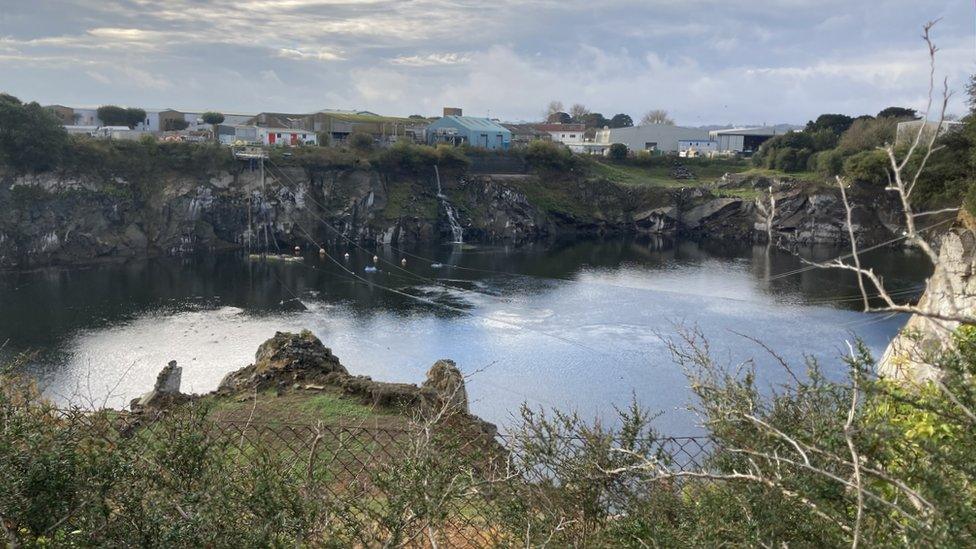
The discovery is thought to relate to a landslide that affected St Sampson's cemetery in 1969
Guernsey Police has confirmed it is investigating human remains found in a former quarry at Longue Hougue.
Gravestones and remains became visible due to the low level of water in the island's largest reservoir.
The discovery is thought to relate to a landslide in 1969 when dozens of graves and headstones from St Sampson's cemetery fell into the quarry.
Police confirmed the discovery was not being treated as suspicious.
Paul Le Pelley, Senior Constable and chairman of the parish church's Cemeteries Committee, said: "Every year we see little bits of tombstones and things but this particular year a whole lot more has come to light."
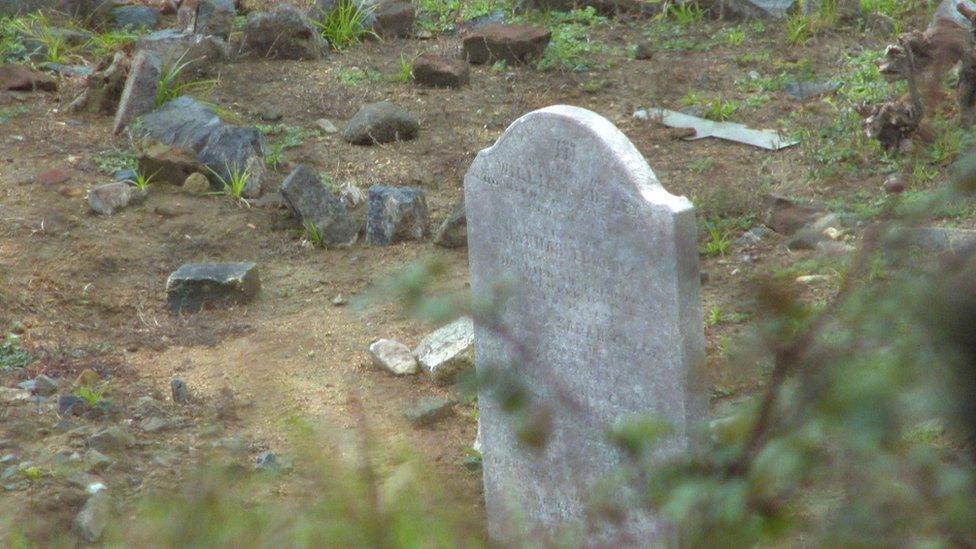
Paul Le Pelley said any operation to recover the remains would be "massively expensive and highly dangerous"
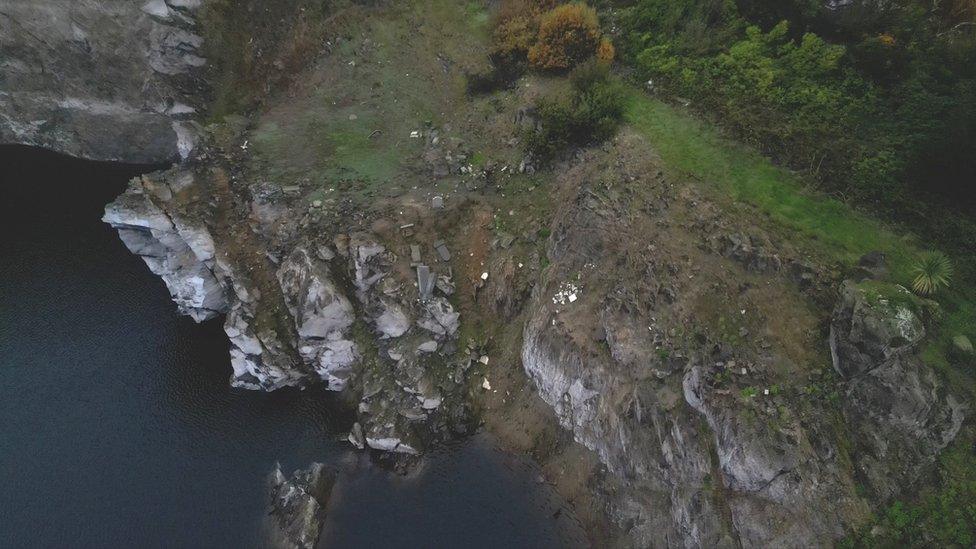
The number of gravesites that were buried in the landslide is unknown
He said: "We've always known there have been human remains and there's actually a rather large ledge of gravestones and coffins underneath them, which actually sit beneath the water level.
"Over the last 53 years they have been submerged, there has obviously been some movement... and some further damage to the coffins and headstones... some have been broken open and unfortunately some human remains have been exposed."
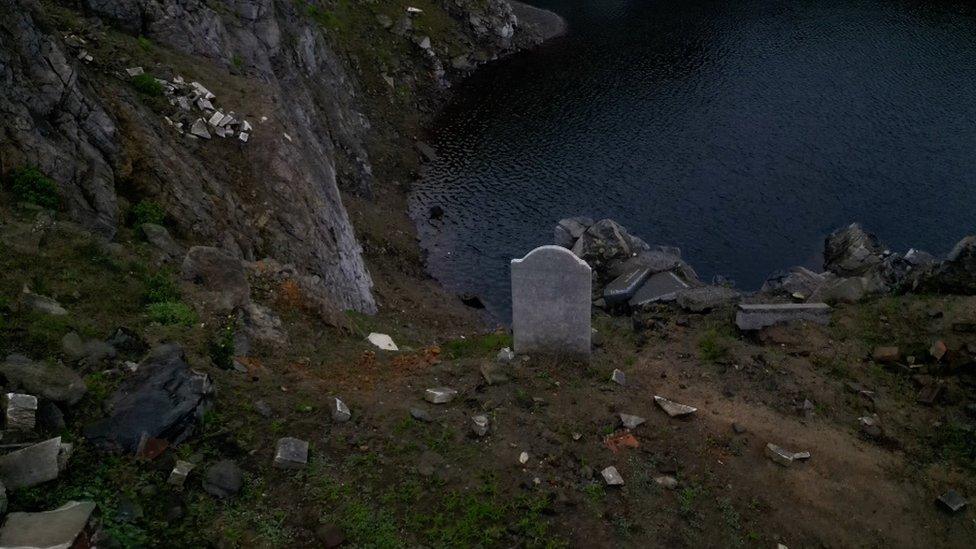
The graves are clearly visible
Mr Le Pelley said: "We're not even sure how many there are.
"It was a working quarry in 1969 and the initial landslip was into a dry quarry and what could be recovered was recovered and the press of the day made it quite plain even then it was very perilous to try and remove certain things and some of the staff was under thousands of tonnes of rock.
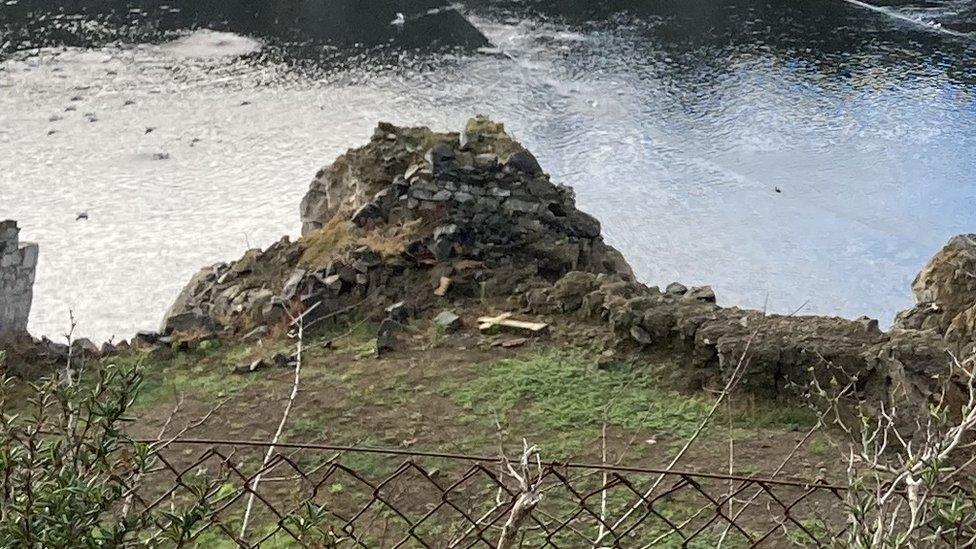
Dozens of graves fell into the quarry in a landslip in 1969
"So it was deemed that the best thing to do was to leave those people at rest in situ.
"Years later the water board took possession of the quarry and it's been turned into a reservoir."
He said any operation to recover the remains would be "massively expensive and highly dangerous".
Water in the island undergoes treatment before it is used as drinking water.
Guernsey Water said there was no risk to drinking water quality and it was working with the authorities.
The company said in a statement: "At this stage it is believed to be the result of an historic landslip, which has been uncovered due to the lower than normal depth of water within the reservoir.
"A visual survey of the area will begin today, to help establish whether there has been any recent land subsidence, and identify any further action that may be required."

Follow BBC Guernsey on Twitter, external and Facebook, external. Send your story ideas to channel.islands@bbc.co.uk, external.